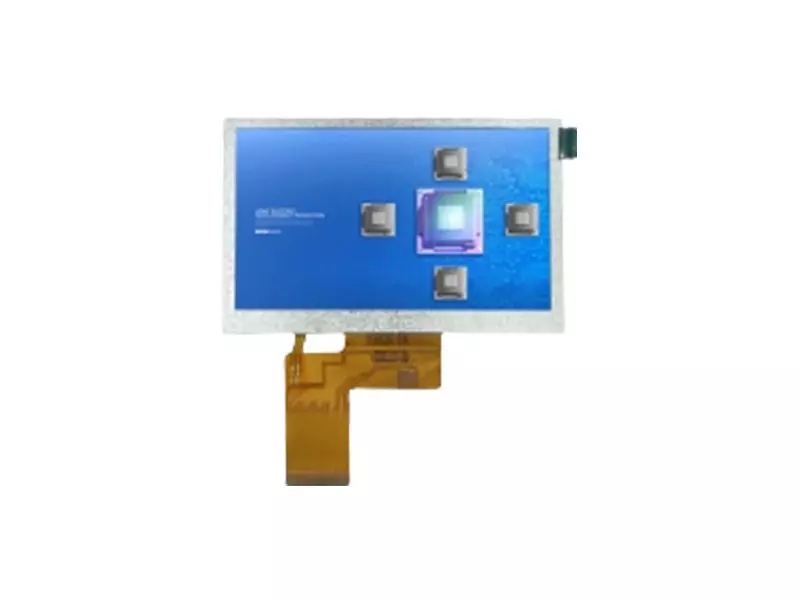Understanding TFT LCD with LVDS Interface: The Future of Display Technology
Jun 13,2025
TFT LCD (Thin Film Transistor Liquid Crystal Display) technology has revolutionized the way we interact with screens, offering superior image quality and responsiveness. One of the key components that enhance the performance of TFT LCDs is the LVDS (Low Voltage Differential Signaling) interface. This article explores the synergy between TFT LCDs and LVDS, shedding light on their functionalities, a
TFT LCD (Thin Film Transistor Liquid Crystal Display) technology has revolutionized the way we interact with screens, offering superior image quality and responsiveness. One of the key components that enhance the performance of TFT LCDs is the LVDS (Low Voltage Differential Signaling) interface. This article explores the synergy between TFT LCDs and LVDS, shedding light on their functionalities, advantages, and applications in various fields.
TFT LCDs rely on an array of thin-film transistors to control individual pixels, resulting in vivid colors, sharp images, and high refresh rates. When integrated with LVDS, the communication between the display and the video source becomes more efficient. LVDS is a high-speed data transmission method that uses low voltage levels to transmit differential signals, reducing electromagnetic interference and allowing for higher data rates. This makes it an ideal choice for driving high-resolution displays, where bandwidth is crucial for maintaining image quality.
One of the primary benefits of using TFT LCDs with LVDS interfaces is their ability to support high definition video output. This is particularly important in applications such as medical imaging, industrial automation, and consumer electronics, where clarity and precision are paramount. The combination of TFT technology and LVDS not only enhances display performance but also improves power efficiency, making these systems ideal for portable devices that require long battery life.
In addition to performance gains, the use of an LVDS interface simplifies the design of electronic systems. LVDS connections require fewer signal lines compared to traditional parallel interfaces, which can reduce the complexity of circuit designs and lower manufacturing costs. This attribute makes TFT LCDs with LVDS particularly attractive for designers looking to streamline their products while maintaining high-quality output.
When considering TFT LCDs with LVDS interfaces for your projects, there are several factors to keep in mind. Ensure that the resolution and refresh rate meet your specific needs, as these parameters significantly influence the overall display quality. Additionally, compatibility with existing hardware and ease of integration into your system should be evaluated to maximize efficiency and performance.
In conclusion, TFT LCDs with LVDS interfaces represent a significant advancement in display technology, offering numerous advantages across various sectors. Their ability to deliver high-definition visuals with efficient data transmission makes them a preferred choice for modern applications. As technology continues to evolve, staying informed about the latest developments in TFT LCD and LVDS technology will be essential for professionals in the electrical and LED display industry. Embracing these innovations can lead to improved product offerings and enhanced user experiences.
TFT LCDs rely on an array of thin-film transistors to control individual pixels, resulting in vivid colors, sharp images, and high refresh rates. When integrated with LVDS, the communication between the display and the video source becomes more efficient. LVDS is a high-speed data transmission method that uses low voltage levels to transmit differential signals, reducing electromagnetic interference and allowing for higher data rates. This makes it an ideal choice for driving high-resolution displays, where bandwidth is crucial for maintaining image quality.
One of the primary benefits of using TFT LCDs with LVDS interfaces is their ability to support high definition video output. This is particularly important in applications such as medical imaging, industrial automation, and consumer electronics, where clarity and precision are paramount. The combination of TFT technology and LVDS not only enhances display performance but also improves power efficiency, making these systems ideal for portable devices that require long battery life.
In addition to performance gains, the use of an LVDS interface simplifies the design of electronic systems. LVDS connections require fewer signal lines compared to traditional parallel interfaces, which can reduce the complexity of circuit designs and lower manufacturing costs. This attribute makes TFT LCDs with LVDS particularly attractive for designers looking to streamline their products while maintaining high-quality output.
When considering TFT LCDs with LVDS interfaces for your projects, there are several factors to keep in mind. Ensure that the resolution and refresh rate meet your specific needs, as these parameters significantly influence the overall display quality. Additionally, compatibility with existing hardware and ease of integration into your system should be evaluated to maximize efficiency and performance.
In conclusion, TFT LCDs with LVDS interfaces represent a significant advancement in display technology, offering numerous advantages across various sectors. Their ability to deliver high-definition visuals with efficient data transmission makes them a preferred choice for modern applications. As technology continues to evolve, staying informed about the latest developments in TFT LCD and LVDS technology will be essential for professionals in the electrical and LED display industry. Embracing these innovations can lead to improved product offerings and enhanced user experiences.
Key words:
Recommended
The Future of PDAs: Enhancing Functionality with TFT Screens
The Future of PDAs: Enhancing Functionality with TFT Screens
Table of Contents
Introduction to PDAs and TFT Screens
The Evolution of PDAs: A Historical Perspective
Understanding TFT Technology: Key Features and Benefits
Enhanced Functionality of PDAs with TFT Screens
Improved User Experience with Advanced Displays
Applications of TFT Screens in PDAs: Real-world Examples





